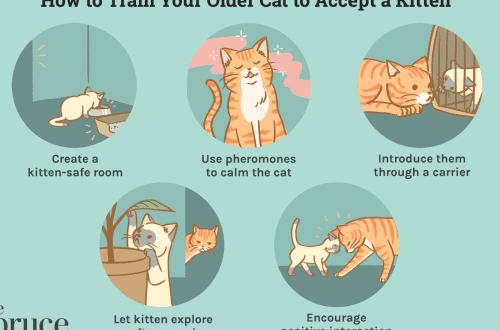
What to do if a cat marks territory
Maintaining a clean home can be quite problematic for any pet owner. There is nothing worse than returning home after a long day at work to find a terrible smell everywhere and a mess on the floor. Urine marking is one of the most common behaviors in cats, along with scratching. And although your first impulse may be the desire to immediately punish the animal for this disgrace, keep in mind that such behavior is quite natural for him.
Why is my cat marking?
In the wild, cats leave scent marks to communicate with their own kind through rubbing, scratching, urinating, and spraying. Smell tags provide cats with important information that another cat has claimed a territory, or that it has been there and may return, and whether the cat is looking for a mate. Most neutered indoor cats don’t feel the need to tag, and those who do tend to be stressed and want to surround themselves with their own scent for protection. Even if you have created a safe environment for your pet and surrounded her with care, she can still be stressed and therefore will mark her territory.
What to do if the cat marks
First, determine if the cat is really marking territory, and not just emptying her bladder.
Cats urinate by sitting on a horizontal surface. When they mark territory, they do it standing up. The cat makes progressive movements with its hind legs, and its tail trembles, and at the same time urine is sprayed in small portions on a vertical surface, leaving a scent mark
If your cat has started to urinate outside of her litter box, make sure you clean it regularly. If the behavior persists, take her to the veterinarian to check for lower urinary tract disease and cystitis. A urinary tract infection can cause a cat to urinate standing up, making it look like it’s marking its territory. Cystitis can also cause lower urinary tract symptoms, including frequent attempts to urinate, straining and/or screaming when urinating, and blood in the urine. Cats that suffer from recurrent cystitis benefit from increased fluid intake, which may require switching to wet food. Consult with your veterinarian to adjust her diet.
How to wean a cat to mark? Recall recent changes in your home that may have caused your cat to behave this way, especially if she spends most of her time indoors. For example, the birth of a child or the introduction of a pet, a move to a new home, a change in schedule, or even rearranging furniture can all affect a pet. To keep your cat safe from other pets or neighbors, block access to cat passages or doors. As soon as your pet feels that nothing threatens her territory, she will no longer feel the need to mark it.
Moving furniture or redecorating can be frustrating for your cat because it will remove her scent from the marked areas in your home. By spreading her scent in familiar places, you can neutralize her desire to re-mark the territory. Run a soft cotton cloth around your cat’s face – this is where her individual scents and pheromones come out. Run this cloth several times a day over the areas your pet marks. You can also purchase synthetic pheromones from your veterinarian.
A cat feels most comfortable when she is safe. Limit her territory to one or two rooms.
The place in your house where the cat has urinated or marked must be cleaned thoroughly, otherwise it may return there.
- Keep the cat away from this area for as long as possible. For example, put some furniture there.
- Wash the area with an enzyme-containing detergent and rinse thoroughly. Then mix a weak solution of white vinegar and water and spray.
- Spray and wipe the surface with rubbing alcohol and dry. Before doing this, test the durability of the paint on delicate surfaces on a small area.
- Ask your veterinarian about stain and odor removers to get rid of residual odors.
- Do not use ammonia-based cleaners. Since urine also contains ammonia, the cat will want to mark the area again.
And finally – under any circumstances, it is very important never to yell at a cat and not to punish. This can only aggravate the situation, as it will cause her even more stress. Cats don’t understand punishment, so the best way to correct behavioral problems is to teach her and keep showing her your love and affection. Gradually, you will be able to redirect bad behavior in the right direction, and your cat will become sweet and affectionate – just like you wanted.





